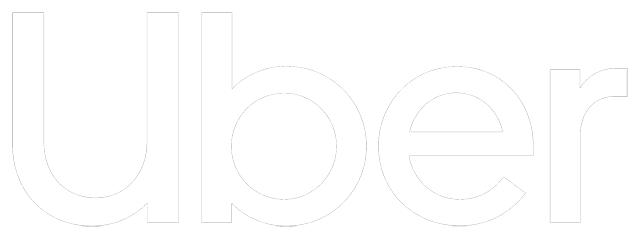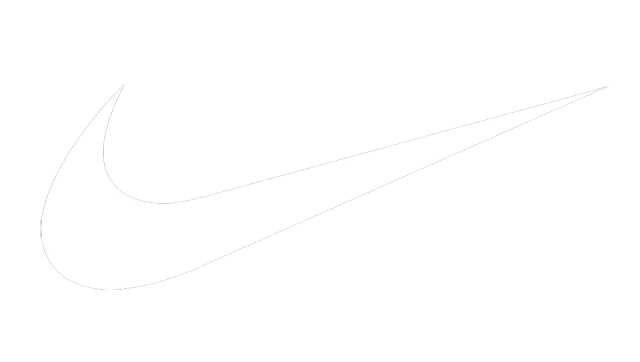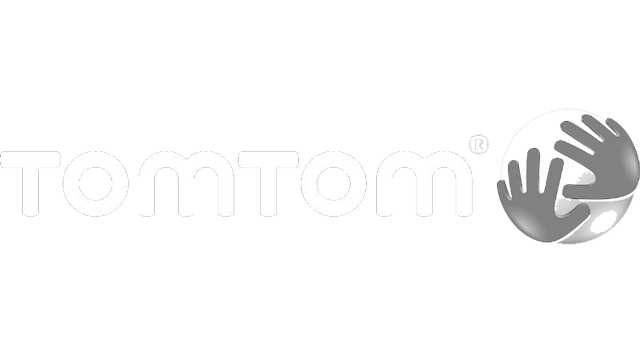We specialise in serving headquarters of global brands, helping them cut complexity costs in strategy execution across markets and fulfil their corporate role as scale economisers and advantage accelerators. Leverage our consulting expertise, technology solutions and remote talent resources to create organisational simplicity, scalability and efficiency in multi-market market operations.
Transforming global brand marketing, creative and eCommerce operations into a competitive advantage
 (EMEA) 47 markets
(EMEA) 47 markets
 (EMEA) 14 markets
(EMEA) 14 markets
 (WHQ)
(WHQ)
In-house brand creative teams and in-house agencies are operating in an increasingly digitalised world. This doesn't affect just what they work on - in terms of digital design or video, but how they work as well. Since in the digital environment and through digital touch-points brands communicate at higher frequencies and across more fragmented landscape, both the pace and volume of creative work has significantly accelerated. As a result of increased workloads and limited headcount, the need for higher productivity and scalability emerged.
Modern creative production operations, especially for enterprise teams and global brands, became both unimaginable and unsustainable without an arsenal of digital tools to power in-house creative teams
Modern creative production operations, especially for enterprise teams and global brands, became both unimaginable and unsustainable without an arsenal of digital tools to power in-house creative teams. The number of digital tools powering creative teams has exploded in the wake of pandemic, as in person collaboration was replaced with remote and virtual experiences through new range of digital tools. Increasing pool of digital tools in use by in-house brand creative teams also increases the digital tool management and operational costs, both in terms of time and money, many of which were initially hidden or un-accounted for.
Digital tools also often bring hidden, or initially un-accounted and entirely unpredictable cost
Hidden Costs Of Digital SaaS Tools In Use By In-House Creative Teams and Agencies.
Along with general (over)promise and (under)delivery in productivity gains and adaptivity to individual creative teams' operational production needs, digital tools also often bring hidden, or initially un-accounted and entirely unpredictable costs. Some of those may be classified as direct costs - cost that arise from increased usage of the tools - either in frequency or capability of tool usage (eg. storage), number of actual users and collaborators and forecasted number of paying licences, but as well number of needed tool modules to fulfil the intuited purpose of the process or project, as well as licence price or price model changes during the contract duration or most often upon its renewal.
Increasing pool of digital tools in use by in-house brand creative teams also increases the digital tool management and operational costs, both in terms of time and money, many of which were initially hidden or un-accounted for.

Indirect cost are all others which arise not from its direct usage, but dependencies linked to it. Some of these can be costs of time getting adapted to new tools, time spent transferring projects, data and materials from one digital tool to another, but also data loss in case of incompatibility between formats, version, export functionalities. Indirect costs arise in the case of data or creative material loss, but also in cases when necessary integrations with rest of your digital ecosystem aren't known or accounted for in advance.
The influx of digital tools into in-house creative teams and their production operations often happens in an unplanned and uncontrolled way.
Even though most digital tools often provide a range of standardised, relatively simple, API driven integration with most popular category compatible tools, depending on the desired level of integration and intra-functionalities, these may require additional developer resources. This is especially the case when SaaS providers need to be integrated with internally built, non-standard, digital tools (eg. bespoke DAM systems, financial management software etc.). Indirect costs can also be tied to mismanagement of digital tool acquisition process and mismanagement of your digital tool portfolio - all digital tools your organisation or team uses, often resulting in waste of organisational time and money, as well as legal risks.
The Rise of SaaS Digital Tools Waste in Creative Operations
The influx of digital tools into in-house creative teams and their production operations often happen in an unplanned and uncontrolled way. Different SaaS tools find their way into hands of creatives searching to quickly solve their individual and immediate needs. Aside of frictionless initial user acquisition, most of SaaS tools also have a built-in product 'virality' - where an initial users, to complete a task invites a non-user, who becomes a user himself, (eg. invite on reviewing an asset). Because of this 'viral loop', SaaS digital tools quickly spread out through out the creative team like ivy, gaining traction until they become an internally accepted, team-level way of doing things. Creeping their way into the creative operations and team workflows, unplanned and uncontrolled digital tooling creates multiple problems for different stakeholders and across different points of time. Problems that improper digital tooling brings for in-house creative teams is waste - waste of money, team effort, data, but also time spent administration and management of disconnected, disparate or overlapping tool portfolio.
Creeping their way into the creative operations and team workflows, unplanned and uncontrolled digital tooling creates multiple problems for multiple stakeholders and across different points of time.

Even though they initially start as free for an individual or limited set of users, as they expand through-out the team, licensing costs not only start appearing out of nowhere, but also quickly escalate. Even worse, as payments are usually done by credit card, sometimes even personal ones, to be refunded through salary or project hours top up, the actual number of billing owners and true costs of digital tools in use quickly become obscured. Because the choice of the particular digital tool originates from an individual users' perspective and need, its usability for the other type of users and roles - the rest of team, actually ends up being less than optimal. It is not uncommon that tools that were brought into the team by and from individual user perspective turn out to be a complete misfit for rest of the members of the in-house creative team, not to mention incompatible with those already in use.
Problems that improper digital tooling for in-house creative is in terms of waste - waste of money, team effort, data, but also time spent administration and management of disconnected, disparate or overlapping tool portfolio.
This in turn triggers another round of re-tooling - finding tools that not only fulfil the entire team's needs but are also compatible with already existing set of tools in use. Needless to say, this again creates another round of waste creation in terms of costs of time, effort and money of switching from one tool to another. Moreover, as multiple users may have looked to solve similar category problems and needs through a new digital tool, as there was no team level visibility and planned search, acquisition and implementation process, creative teams often end up with multiple tools in use within same category and within overlapping functionalities.
Rationalising The Number of SaaS Digital Tools and Their Costs for In-House Creative Agencies
As pace of digitisation and digitalisation of business functions accelerated and market offering became hyper granulated, diverse and fragmented across tens of thousands of suppliers, once centralised IT department-led purchase of software solutions became impossible. Days when IT was able to control and steer purchase of software and tools for all departments are gone. This is especially true for small (1-100) and medium (101-1000) sized companies, where as in enterprise (1001+) IT is devoted only to large scale core and cross departmental digitisation projects.
According to the report an enterprise company spends $2,047 on SaaS per employee in 2020.
.jpeg)
An eye-popping 5,233% growth over the decade in marketing technology tool space
day each department chooses SaaS platforms that are most convenient for them. This is intuitive, as what works for the Marketing department of a company, won’t work for the Engineering department, or R&D. But, this decentralised approach has led to rise of SaaS waste. Companies are increasingly paying for apps that they aren’t using or optimising. This could be due to employees creating new accounts and resubscribing, or companies forgetting to unsubscribe from apps they are no longer using. The 2020 annual report on state of SaaS market and companies, done by Blisfully, a company focusing on SaaS management, confirms the rise of the SaaS waste trend. According to the report an enterprise company spends $2,047 on SaaS per employee in 2020.
The average amount wasted is $135,000 annually per company.
.jpg)
Source : Blisfully.com SaaS 2020 Annual Report
An enterprise company team has, on average, 7.1 abandoned subscriptions and 7.6 duplicate subscriptions. An enterprise has a 60% 2-year SaaS app turnover. This means that 60% of SaaS stacked changed since 2018. 26% SaaS apps added 46% SaaS apps dropped. The average amount wasted is $135,000 annually per company. With so many duplicate subscriptions, same category and similar functionalities overlapping digital tools in use, high churn - abandonment and replacement rate of SaaS, the need for rationalisation of the number and licence costs becomes an immediate need for in-house creative professionals.
Removing Digital SaaS Tools Waste Creation Through Prevention
Removing waste in digital tooling for in-house creative teams is a cross dimensional effort. Like with any problem, removing waste or problems created by improper digital tooling is best done through prevention. Preventing uncontrolled and unplanned inflow of digital tools into creative teams and creative production operations is one of the outcomes of our Digital Tool Enablement service.
.jpg)
Connecting & Integrating Existing Tools Already Embedded in Creative Operations
Once already inside creative operations, some digital tools might be too hard to remove, even if they're not a best fit. But sometimes even those which are perfect fit for part of creative production operations, need to be additionally connected or integrated with other tools in your portfolio to completely ensure digitised workflows from end-to-end.

When there's a need to create operational and functional connection between different tools, integrating workflow, to prevent gaps in functioning our development teams can help. Integration of SaaS tools with internally built system for which there's no API based integration can also be overcome through creation of bespoke software integrations.
Consolidating & Optimising The Number Of Digital Tools In Use Through An SaaS Audit
Doing an SaaS audit of creative operations we'll uncover all apps currently used by in-house creative teams. Whether its used by a single person, a single team or entire in-house creative department we'll create a list that will not only delineate nature and purpose of these apps but also uncover true subscription costs identifying ways how they got into the organisation.

Based on the analysis of the features & functionalities, purpose and needs they were envisioned to satisfy, we'll create a optimisation and consolidation steps to make sure that those tools who best fit the purpose and team-level needs get used. In case there are overlapping tools, subscriptions and features we'll propose rationalisation steps. Clients often aren't aware that subscription costs can further be negotiated down based on the individual vendor, negotiating position, the actual level of usage etc. We'll make sure you maximise value and minimise costs of your digital tool portfolio.
Consolidating Disparate Digital Tools Into A Single User Interface
According to the industry report average corporate employees switch between 35 job-critical applications more than 1,100 times every day. They complete an average of 134 copy-and-paste actions daily. With some many different apps in use, switching between them to complete a single job can become burdening. In these cases part of our engagement can be targeted towards creation of supra-level user interface that would be tailored to your needs and visual preferences.

Employees switch between 35 job-critical applications more than 1,100 times every day. They complete an average of 134 copy-and-paste actions daily
For those digital tools that are certain and long term fit with your needs and are crucial to your core process which won't change in short term nor medium term we can create a tailored user interface that would consolidate all apps under a single interface. This would mean that your jobs could be completed visually within a single interface and without switching multiple programs.
.jpg)
ndividual app interface would be effectively replaced with a new consolidate interface design to foster your specific jobs-to-be done. However, you'd still be subscribed to all apps that are needed for work to be done, but there would be a gain in productivity as well as total user experience.
Replacing SaaS Tools and Recurring Subscription Costs With Bespoke Digital Solutions And One Time Investments.
For large creative teams some of the traditional digital tools (eg. project management) and their subscription costs can quickly become quite a financial burden and create significant overhead costs. Moreover, as no single tool can satisfy unique needs, most of the time other supporting tools don't get used to the fullest - in terms of modules actually used vs. paid but are impossible to decouple from preset billing plans. Actually, most of the time the reason why there's so many tools in use is that the creative teams use around 30% of each digital tool - a single or couple of features which work really well for them, but are unavailable within a single solution nor can be used (or paid for) on an individual module basis. In this case you pay for a pre-set plan of usage, but you actually use 10% of the features and functionalities that are built-into this plan.

While there isn't a clear cut rule, the larger the team the higher the chances that your current digital tool stack could be replaced by a bespoke solution. While there's no economic logic to consider creating a bespoke project campaign management tool for 10 or 20 users, for teams that have 100-200 users or more, this might actually be a better choice - both financially and operationally. In this case, a one time investment would replace a recurring subscription costs. The ROI in this case would mean that beyond costs of year or two of subscription charges you'd be getting a bespoke solution for free.
In case you're interested in rationalising the number and costs of tools your team uses, feel free to drop us a line at contactus @ so.digital or simply book a chat with me.
References :
Simon Lofthouse & Bill Gilliam, "The hidden costs of software licensing and how to avoid them" https://www.financialdirector.co.uk/2018/07/31/the-hidden-costs-of-software-licensing-and-how-to-avoid-them/
Ariel Diaz, "71+ SaaS Statistics & Trends For 2020",https://www.blissfully.com/blog/saas-statistics/
Louis Coppey, "Understanding viral growth in SaaS" https://medium.com/point-nine-news/understanding-viral-growth-in-saas-45eea50d8900
Scott Brinker, "Martech 2030 Trend #3: The Great App Explosion" https://chiefmartec.com/2020/12/martech-2030-trend-3-great-app-explosion/
Jack Danger, "The Four Interfaces of SaaS products" https://medium.com/dangerous-engineering/the-four-interfaces-of-saas-product-suites-fb4d516169ed
